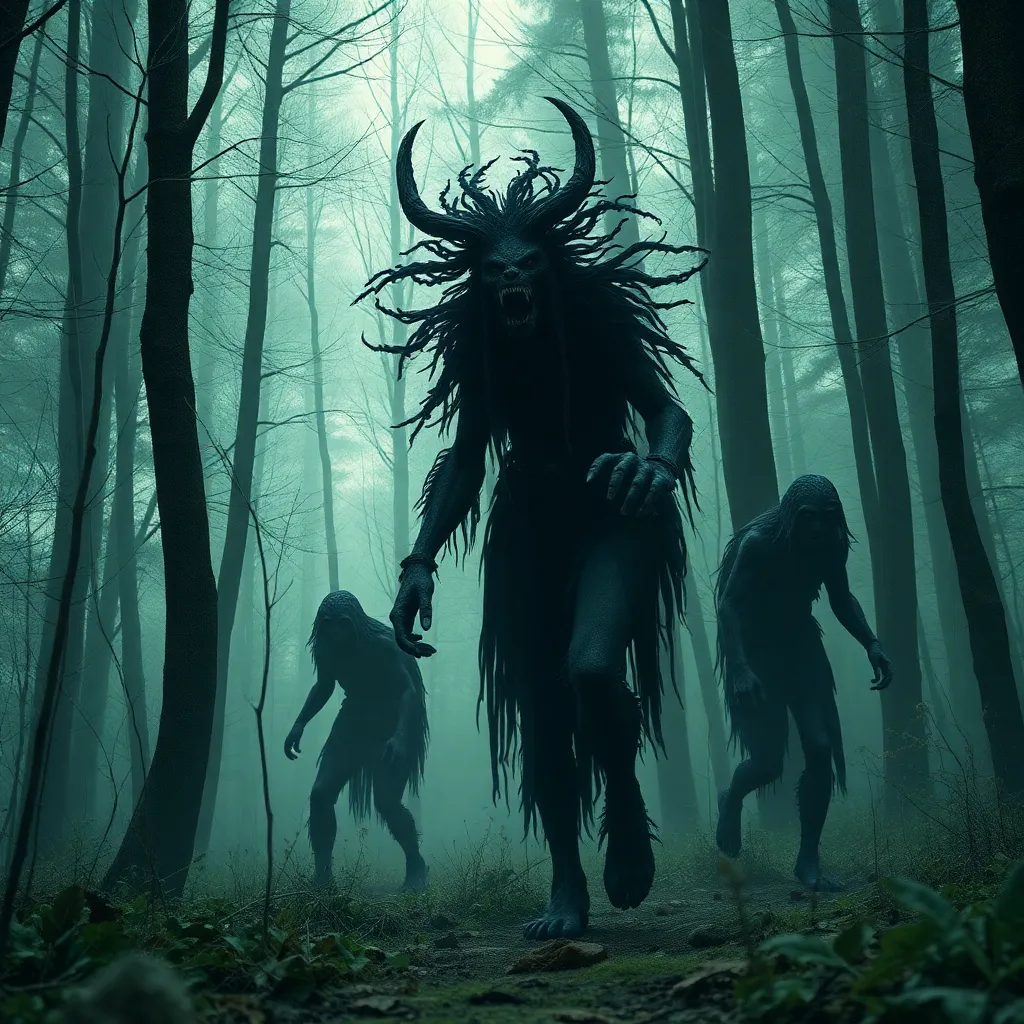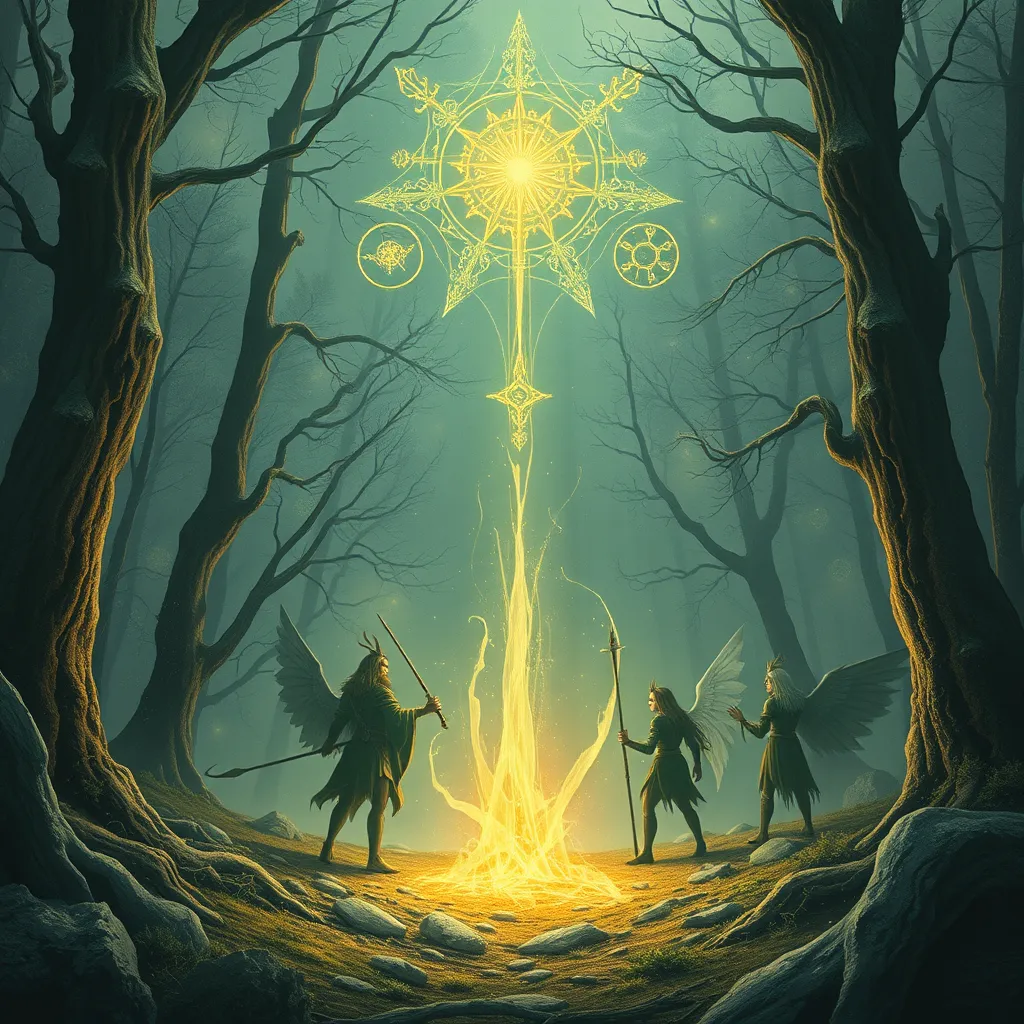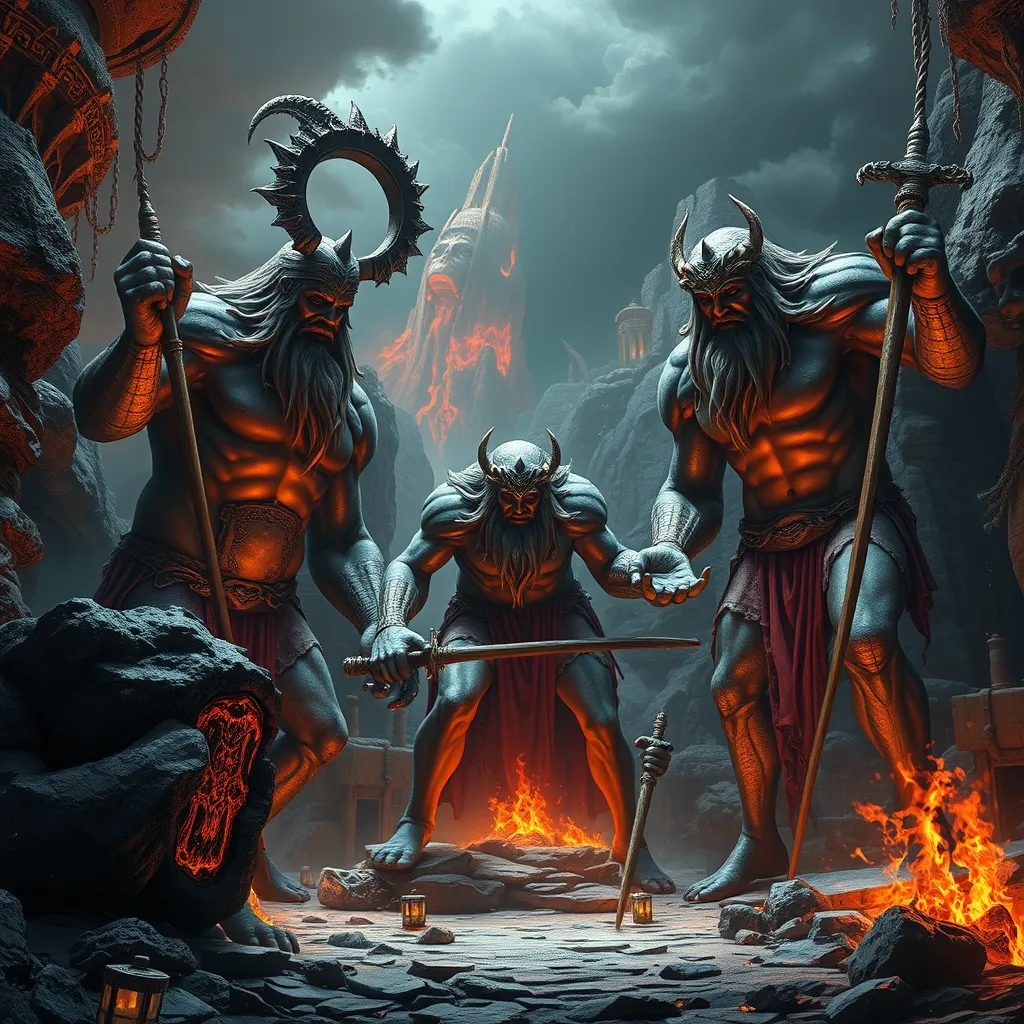The Shadow in the Woods: Encountering Skinwalkers in the Wild
I. Introduction to Skinwalkers
Skinwalkers are a prominent figure in Native American folklore, particularly within the Navajo culture. The term “skinwalker” translates to “yee naaldlooshii,” which refers to a person who has the ability to shapeshift into various animals. This supernatural entity is often associated with malevolence and witchcraft, making it a feared figure in many indigenous communities.
The origins of the skinwalker legend stem from deep-rooted beliefs in the power of transformation and the connection between humans and the animal world. These tales have been passed down through generations, with each tribe offering its unique interpretation and significance. In many cultures, skinwalkers embody the fears and taboos associated with transgressing cultural boundaries, often serving as cautionary tales about the dangers of embracing dark powers.
II. The Mythology Behind Skinwalkers
Skinwalker mythology is rich with historical accounts and traditional beliefs that vary widely among tribes. Some tribes view them as evil witches who have committed heinous acts, while others see them as individuals cursed with the ability to transform.
A. Historical accounts and traditional beliefs
Historically, skinwalkers were believed to be medicine men or women who used their powers for malevolent purposes, such as harming others or seeking revenge. The tales often emphasize the consequences of straying from moral and ethical paths.
B. The transformation process: humans to animals
The transformation process is a central theme in skinwalker lore. It is said that skinwalkers can turn into any animal they desire, often choosing creatures that instill fear, such as wolves, coyotes, or owls. This shapeshifting ability is believed to be a result of witchcraft, and the methods of transformation vary across stories.
C. The role of witchcraft and spiritual practices
Witchcraft plays a significant role in skinwalker mythology. Many narratives suggest that skinwalkers acquire their powers through dark rituals, often involving the desecration of sacred objects or the violation of cultural taboos. This connection to witchcraft adds a layer of complexity to the skinwalker legend, intertwining it with the spiritual beliefs of the community.
III. The Psychology of Fear: Why Skinwalkers Captivate Us
The skinwalker legend captivates the imagination, tapping into deep-seated fears of the unknown and the supernatural. This allure speaks to the human condition and our fascination with the mysteries of life.
A. The allure of the unknown and the supernatural
Humans are inherently curious, often drawn to the inexplicable. Skinwalker stories embody this curiosity, providing a glimpse into a world where the natural laws of reality can be bent and broken.
B. Psychological impact of folklore on communities
Folklore, including skinwalker legends, serves to strengthen community bonds and cultural identity. These stories are often shared during gatherings, reinforcing shared values and beliefs while also instilling caution among community members.
C. Personal narratives and urban legends
Personal narratives about encounters with skinwalkers often circulate within communities, transforming into urban legends that blur the lines between reality and myth. These stories evoke fear and fascination, contributing to the ongoing relevance of skinwalker lore.
IV. Encounters in the Wild: Real-Life Experiences
Documented sightings of skinwalkers and stories from locals provide a tangible connection to this mythological figure. Many individuals claim to have encountered skinwalkers in remote areas, often during solitary hikes or camping trips.
A. Documented sightings and stories from locals
- Reports of strange noises and movements in the woods
- Witnesses describing encounters with animals that behave unusually
- Accounts of feeling watched or followed in isolated areas
B. Analysis of common themes in encounters
Common themes in skinwalker encounters often involve feelings of dread, the presence of unusual animal behavior, and an overwhelming sense of being watched. These elements contribute to the chilling nature of these experiences.
C. The role of isolation and wilderness in these experiences
Isolation in the wilderness can amplify feelings of fear and vulnerability, making encounters with skinwalkers more terrifying. The vastness of nature often serves as a backdrop for these chilling tales, where the unknown lurks just beyond the reach of the campfire’s light.
V. The Science Behind the Phenomenon
While skinwalker legends are steeped in folklore, some skeptics seek to explain these phenomena through psychological and environmental lenses.
A. Skeptical perspectives: psychological and environmental explanations
Skeptics argue that many skinwalker sightings can be attributed to psychological phenomena, such as pareidolia (seeing patterns in random stimuli) or the power of suggestion, where the mind fills in gaps with fear-driven interpretations.
B. The influence of folklore on perception and interpretation of experiences
Folklore shapes how individuals interpret their encounters with the unknown. Stories of skinwalkers can influence perceptions and amplify fears, leading to heightened vigilance and misinterpretations of natural events.
C. The role of cultural narratives in shaping reality
Cultural narratives play a crucial role in shaping reality. The power of storytelling can transform mundane experiences into extraordinary encounters, reinforcing the belief in skinwalkers and their supernatural abilities.
VI. Skinwalker Tourism: Exploring the Dark Side of Curiosity
The rise of paranormal tourism has led to an increased interest in skinwalker legends, drawing thrill-seekers to regions steeped in these stories.
A. The rise of paranormal tourism in regions known for Skinwalker legends
As interest in the supernatural grows, areas known for skinwalker legends have become popular tourist destinations. Visitors often seek out haunted locations, hoping to catch a glimpse of the elusive skinwalker.
B. Ethical considerations of visiting sacred lands
While exploring these regions can be thrilling, it raises ethical concerns. Many of these lands hold sacred significance for indigenous communities, and disrespecting these traditions can perpetuate cultural appropriation.
C. Responsible storytelling and respectful engagement with local cultures
Engaging with local cultures respectfully involves understanding the significance of skinwalker legends and acknowledging the cultural context in which these stories exist. Responsible storytelling honors the traditions of indigenous communities.
VII. Coping with Fear: How to Handle Encounters
For those venturing into the wilderness, understanding how to cope with the fear of encountering skinwalkers is essential.
A. Practical advice for hikers and outdoor enthusiasts
- Stay aware of your surroundings and avoid hiking alone in remote areas.
- Respect local legends and understand the cultural significance of the land.
- Carry a whistle or other signaling devices for emergencies.
B. Cultural practices and rituals for protection
Many indigenous cultures have rituals and practices meant to protect against malevolent spirits. Learning about these practices can provide a deeper understanding of local beliefs and offer a sense of security.
C. Building awareness and understanding of local legends
Educating oneself about local legends fosters respect for cultural narratives and can help mitigate fear. Understanding the origins and meanings behind skinwalker stories can transform fear into fascination.
VIII. Conclusion: The Enduring Legacy of Skinwalkers
The relevance of skinwalker stories persists in modern society, reflecting our fascination with the supernatural and the unknown. These legends serve as a reminder of the rich cultural heritage of Native American communities and the importance of preserving these narratives.
As we reflect on the intersection of myth and reality, it becomes clear that stories of skinwalkers hold a significant place in our collective consciousness. They challenge us to confront our fears and engage with the mysteries of existence while respecting the traditions from which they arise.
Ultimately, preserving cultural narratives and respecting indigenous traditions is vital. By doing so, we honor the legacy of skinwalkers and acknowledge the deep-rooted significance of these tales in shaping our understanding of the world.




